Located adjacent to beautiful Lincoln Park in Jersey City, St. Aloysius, completed in 1908, enjoys one of the finest sites imaginable. The approach to the church is quite impressive. The church is a melange of styles. The body of the church follows the French Renaissance style, while the portico is influenced by Giacomo della Porta’s church of Santa Maria della Pace in Rome. The facade is influenced by French classical style. The bell tower, added in 1912, recalls the campanile of St. Mark’s in Venice, albeit in granite, not in brick. The church of St. Columba in Newark also has a similar portico and bell tower. This is not surprising as Charles Edwards designed both churches. As in St. Columba’s Church in Newark, Edwards was influenced by what he called French Renaissance, which actually is a combination of Baroque and French Neoclassicism.
We can say that the style is a combination of Renaissance and Baroque. A restoration in 1987 restored the church’s original chromatic colors, especially noticeable in the grand vaulted nave. The nave is a three-bay basilica divide by two rows of scagliola false marble pillars. Scagliola is a technique that produces a result often mistaken for actual marble.
The pillars are topped with Renaissance style ionic columns and half circle arches. The plaster scroll-work, the keystones, and the garlands add a Baroque feeling. The central sanctuary consists of a classical choir and apse arrangement. The original white marble altar now is a reredos. The pews are original.
The monumental white statues are of white Cararra marble. All are delicately carved with exceptionally fine detail. They depict Christ crucified, Our Lady of GRace, St. Joseph, St. Aloysius, St. Anthony, and the Sacred Heart. The Stations of the Cross are similar to those in St. Columba’s another Edwards Church.
The windows date from several different periods. Notable are the windows of St. Patrick, Patron of Ireland, and of St. Bridget, Patroness of Ireland. St. Bridget, an abbess, holds a crosier. While we associate crosiers only with bishops, Irish abbesses were quite powerful and often used the crosier as the symbol of their authority. The maker of the nave and clerestory windows is not known.
The facade window, approximately 12 feet by 30 feet, shows Christ the King at the center surrounded by angels. together with the Blessed Virgin Mary and Saints Peter and Paul. This enormous window has no supporting masonry. Daprato Studios of Chicago and New York created it.
St. Aloysius was established to serve a predominately Irish-American congregation. Today it serves a population that is predominately Filipino and Latino.
http://staloysiuschurch.net/
About The Building
Architect(s)
- Charles Edwards
Architectural Style
- Mixed
Fabricator(s) of Windows
- Daprato Studios - Facade Window
Notable Works of Art
- The facade window depicting Christ the King is approximately 12' x 30'. The figure of Christ the King is surrounded by angels and below it The Blessed Virgin, St. Peter, and St. Paul are depicted. This enormous window has o supporting masonry. The monumental statues are all of pure white Cararra marble.
Renovations
- 1960s - The church was painted and the original altar rail was replaced by a marble altar rail. One row of the choir stalls was removed. 1987 - The original colors of the church were restored. The altar rail was removed. The mensa was removed but the reredoes retained. A marble floor was installed in the sanctuary. A permanent marble altar of sacrifice was installed. The remaining choir stalls were removed.
Current Status: In use
Interior Pictures
Exterior Pictures
Year Opened: 1904
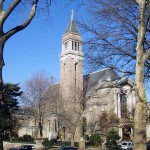
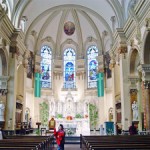
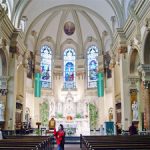
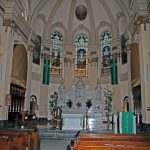


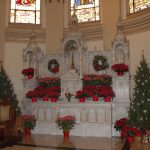
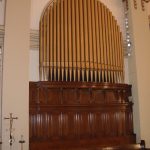

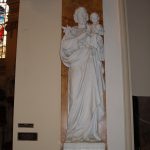
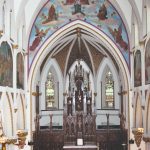
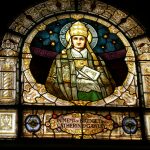
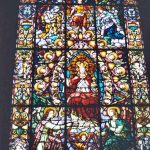
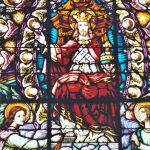

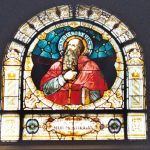




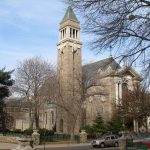
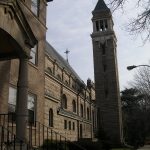

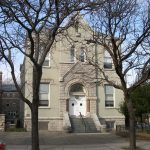
Link to Daprato Rigali’s website: https://dapratorigali.com/